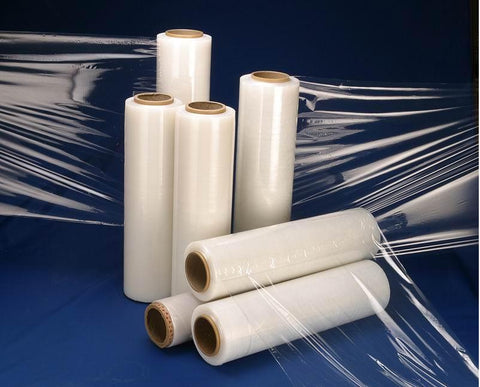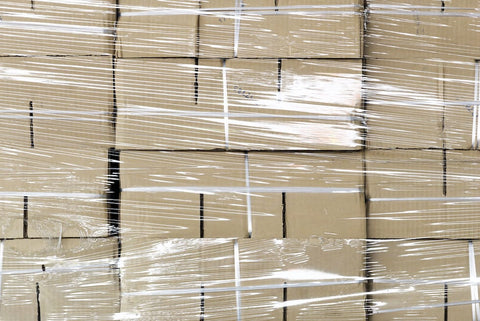Shrink Wrap: The Differences Between PVC, Polyolefin, And Polyethylene
Posted by Adrián Fernández on
Can you use any plastic for shrink wrap?
The three major materials used to produce shrink wrap are PVC, Polyolefin, and Polyethylene.
What is shrink wrap, and what’s it used for?
Shrink wrap is a highly stretchable plastic that molds and holds close to your item, protecting it from dents and scratches which could occur during the shipping process.
When heat is applied to shrink wrap, it allows a close fit and conforms to whatever the shape of your product is - whether you’re transporting aged steaks, appliances or a fragile invention that could change the world!
These characteristics make it a widely popular shipping supply. It’s also cost-effective and very reliable.

Which is the best plastic for shrink wrap and why?
Get to know the three main types of plastics used to make shrink wrap and decide which one is best for your shipping needs.
-
PVC— also known as Polyvinyl Chloride, was a preferred retail sales shrink wrap for many years. Following the application of heat, PVC becomes hard and rigid with a low shrink required temperature. If you’re looking for a more affordable option, this is the shrink wrap for you. But be sure to have proper ventilation, as heated PVC emits a powerful odor.
-
Polyolefin— This is a polyethylene or polypropylene plastic and is the most commonly used shrink wrapping for retail packaging. This shrink wrap offers impressive benefits like being more shelf stable, better seals on high-speed machines, less residue and is FDA approved for direct food contact.
-
Polyethylene— With multiple variations, this is the world’s most common plastic and is used for heavier wrapping. Often used for canned goods and bottled water packaging, it offers great stretch and puncture resistance. This shrink wrap also contains UV additives, which prevent the film from breaking down when exposed to the outdoors.
As you can see, Polyolefin presents the most benefits for business or personal use.
Polyolefin shrink wrap has slowly replaced the once traditional PVC shrink wrap as a cleaner, more eco-conscious and safe way to package your goods. Its popularity is continually growing, with more retailers choosing Polyolefin shrink wrap.
With no chloride or plasticizers to pollute the environment or contaminate your products, Polyolefin reigns supreme over PVC packaging in many ways:
- Works well in many climates, hot or cold, and keeps your packages safe. Unlike PVC, which gets brittle in cold weather and wrinkles in heat.
- It offers more resistance and has more stretch than PVC, which reduces tears.
- Easier application by hand rather than expensive machinery for PVC.
- Certified for direct food contact unlike PVC, which gives off chloride, carbon, and harmful odors. Polyolefin shrink wraps are FDA approved
- PVC packaging may cost less because of scale, but polyolefin is a better choice in terms of the environment, easier application, and reliability.

It’s a wrap!
Hands down, polyolefin shrink wraps are the safest, most reliable way to package your products.
If you’re looking for high-quality shrink wraps for large or small business, find out more here https://shipknox.com/pages/shrink-wrap-2 . Or contact us for wholesale options with fast and FREE shipping anywhere within the continental USA.Share this post
- Tags: Polyethylene, Polyolefin, PVC, Shrink Wrap

